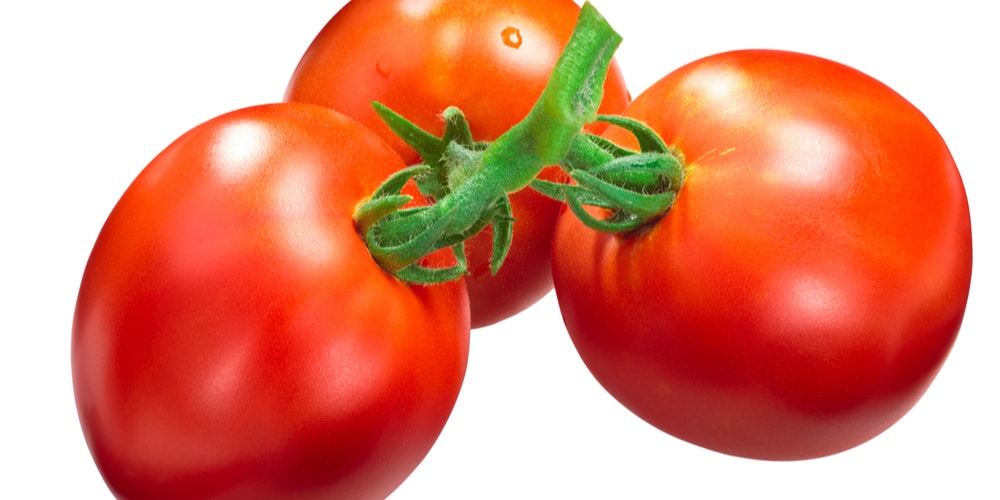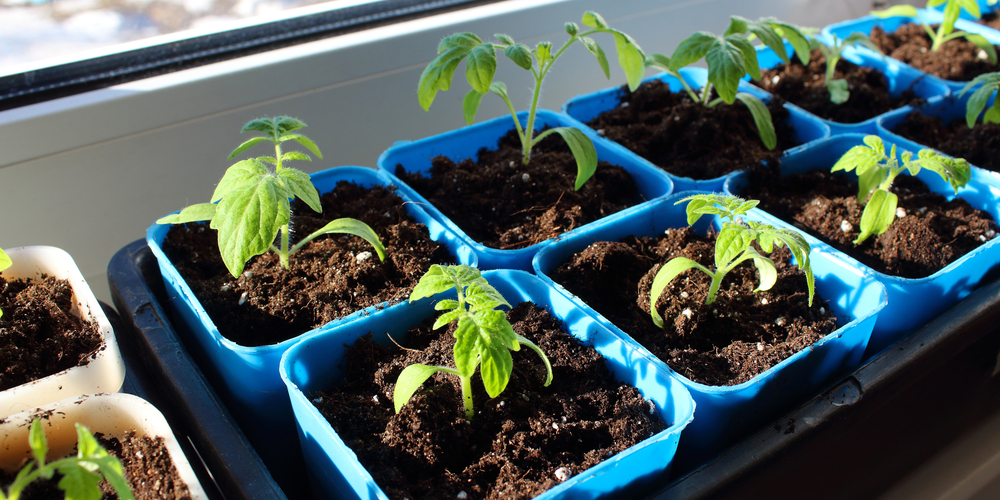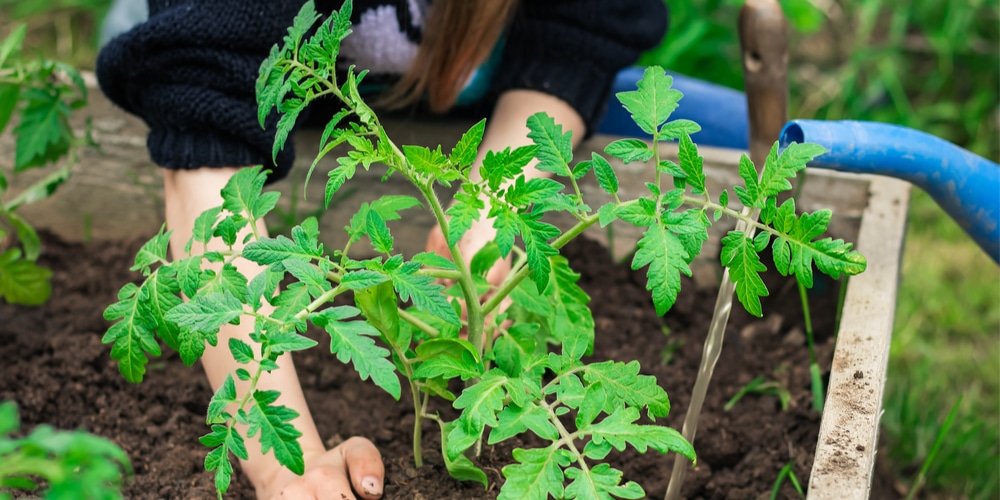Marglobe tomato is a determinate variety with a sprawling growth habit. This tomato species results from the combination of the Marvel and Globe tomato plants, and it is an excellent choice for gardeners who live in colder regions.
Marglobe tomato plants are resistant to most diseases that tend to ruin harvests, making them ideal for beginner gardeners. Keep reading this essential guide we put together if you want to learn more about this crop!

| Botanical Name | Solanum lycopersicum |
| Common Name | Marglobe Tomato |
| Plant Type | Annual |
| Flower Color | Pale Yellow and star-shaped |
| Size When Mature | Between 24 and 36 inches tall and 24 and 36 inches wide |
| Bloom Time | Summer |
| Sun Requirements | Full Sun |
| USDA Hardiness Zones | 5-11 |
| Soil PH Range | 6.0-6.8 |
| Soil Type | Well-draining, moist, and fertile water water water |
| Water Needs | Medium |
| Native Area | North America |
What you Need to Know About Marglobe Tomatoes
Marglobe tomatoes are a century-old variety that produces 7 to 10 ounces of deep red fruits that typically require 100 days to mature. Marglobe tomatoes are excellent for canning. The plant is versatile and adapts to various climates, including lower temperatures and humid conditions.
Under the ideal climate (and with adequate care), growing marglobe tomatoes is not challenging. However, you may want to jump to the following sections to learn more about the needs and requirements of this crop.
How to Care for Marglobe Tomato
If you have grown a vegetable garden before, you may know that taking care of tomatoes can be fun if you know what they need. Still, if you need more information about it, keep reading this essential guide! Here is everything you need to know about caring for a thriving Marglobe tomato plant.
Light
You must place your tomato plants in a sunny location. To get plenty of fruits, your plant must receive at least six hours of direct sunlight. Remember to sow its seeds after the threat of frost has passed.
While you may still get fruits even in partial shade, your plant will be much more prolific under the full sun. You can also grow Marglobe tomatoes indoors. However, you must get artificial lights if you want to pick harvests.
Water and Soil Needs
Tomatoes love moisture and will perform much better in well-draining soil. Ensure you follow a watering schedule but avoid overwatering your plants.
Feel the ground with your fingers before adding extra moisture to prevent issues. You may have to adjust your watering to the local climate. And if you live in a hot and dry region, consider adding a layer of mulch around your plants. Doing so will also keep weeds at bay and protect your plants from thermal shock.
Since tomatoes prefer fertile soils, you may have to amend your garden’s substrate to make it more suitable for these crops. Ideally, you should maintain the soil’s pH between 6.0 and 6.8.
Temperature Requirements
Marglobe tomatoes thrive in warm weather. While they may survive temperatures below 50°F, you should not expose them to such conditions. Instead, growing at temperatures between 60 and 95°F: your plants will give you plenty of satisfaction!
Fertilizer
Tomatoes are heavy feeders and need plenty of minerals and vitamins to produce abundant harvests. Consider adding manure around your plants during the growing season.
However, keep in mind that this organic solution won’t be enough to ensure healthy fruit production. Consider doing a soil test and purchase suitable products depending on your substrate’s needs.
Avoid overdoing it: too much fertilizer might burn your plants, stunt their growth, and stop fruit production.
Common Diseases
Marglobe tomatoes are hybrid plants developed for their disease resistance. So, if you don’t want to lose too much time protecting your crops from diseases, planting Marglobe tomatoes might be an excellent solution.
While it won’t suffer from fusarium wilt or tomato blight as frequently as other varieties, you’ll still have to keep an eye on your crops. After all, tomatoes are also susceptible to attacks from pests. If you notice something off with your plant, take prompt action to avoid spreading infections.
Marglobe Tomato Propagation
Propagating tomato plants is possible (even if not many people do it). You can create new plants from cuttings or seeds. However, the first option tends to be more effective.
Snip side shoots from your plants and places them in the water beside a window that receives indirect light during the day. Change the water regularly and wait for a root system to develop within a month.
After that time, plant your seedlings in a suitable container and keep them moist. They will be ready to grow outdoors when they reach about 12 inches in height!
Related Article: Do Tomato Plants Come Back?

